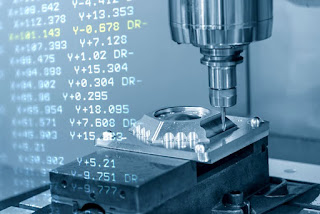Components of CAM and Their Role in CNC Machining
Most manufacturing processes are complex, and this is because even a minor part plays an important role in the production unit and hence needs to be designed with attention to details. Gone are the days when process issues were resolved manually.
Today, computer-aided manufacturing, abbreviated as CAM, is widely used as part of automating a manufacturing process. CAM is one of the important aspects of computer numerical control (CNC) machining.
Manufacturers nowadays heavily depend on the capabilities of CAM to produce high-quality and precise parts. Now, you might be interested to know what CAM is or what components are required for CAM to function? This post answers the same.
What is CAM?
CAM is a program or a tool that makes use of numeric control or NC for creating detailed instruction (G-code). This code, once executed, helps the CNC machine perform the required actions like cutting and drilling. With the help of CNC machining, these repetitive tasks can be performed with ease, accuracy, and precision; irrespective of the volumes. CAM usually works along with computer-aided design (CAD), which facilitate even complex designs to be machined.
What Are the Components of CAM?
The industrial revolution has benefitted the manufacturing sector in many ways, and the introduction of CAM is one of those great benefits. Based on the definition, the CAM system requires the following three components:
- Software that instructs a machine on how to make products by simply generating toolpaths.
- Machinery that can convert raw materials or parts into finished goods.
- Post Processing that can encrypt toolpaths into a machine code.
CAD to CAM Process Explained
As discussed earlier, CAD/CAM software designs and manufactures prototypes. CAM works in tandem with CAD for producing finished products directly from the computerized design. CADprepares the product design, while CAM supports both prototyping and line production.
First, engineers prepare a drawing of the product within a 2D or 3D modelling program. This prototype contains a set of physical properties that are further used by the CAM system. Afterwards, the prototype is imported into CAM software that prepares a model for machining through several actions including drilling and cutting. To function machining efficiently, a set of instructions in English are converted into a language called G-Code. G-code contains all instructions that control a machine’s actions, including the machine speed, feed rate, and coolants.
Once the G-code is loaded, the machine starts executing a prototype into a finished product.
How CNC Machining Utilizes CAM?
The previous section described everything about CAD and CAM systems. Now, it is time to see how CNC utilizes CAM software. In a typical workflow, the programmer chooses the drawing for CAD model and analyzes the processes and tools required to make or assemble the required parts.
The individual is responsible for defining toolpaths, speeds and feeds in the G-code. This program is then handed over to the machine operator, who configures the CNC machines by loading the G-code program and setting up tools. Once the system is prepared to roll, the machine will start performing tasks it is programmed to do.
By now you might have understood the role of CAD/CAM software in a manufacturing process. It offers the designer with improved control over sizing and dimensions of parts, design complexity and flexibility, and so on.
If you are in search of a CNC machining services partner, then BDE, Inc. could be the right choice for you. With a vast industry experience, the company has established itself as one of the leading providers of CNC machining services in the US. The company caters to diverse industries such as aerospace, military, oil and gas, medical for several years now.




Comments
Post a Comment